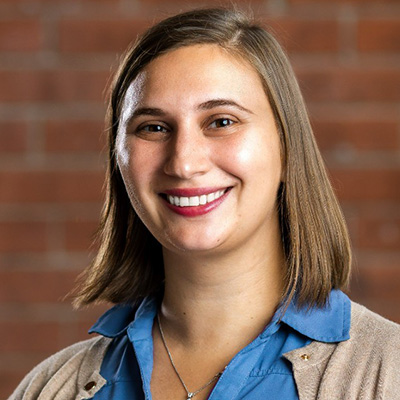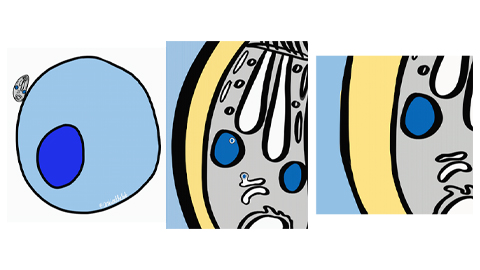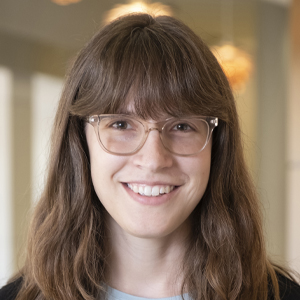Being curious and taking opportunities when they come
Anna Hertzberg has an open-minded view of navigating a career. She’s worked a variety of jobs and seized opportunities as they appear. She has a clear and matter-of-fact sense of what fits in her life and what doesn’t, what her strengths are and what she still needs to learn. She’s found a good fit in the world of regulatory consulting.
First, some basics: A regulatory consultant helps biotech and pharma companies meet government regulations to get their drugs to market. Companies and regulatory bodies work together to ensure that drugs given to patients are both safe and effective. This includes navigating the long and complicated process with the U.S. Food and Drug Administration leading up to clinical trials and the FDA approval process to put a drug on the market. At overseas companies, this can also include working with international regulatory bodies.

Some regulatory experts work at drug companies, and some work for independent firms. Hertzberg has done both. Her path was winding, but that isn’t unusual.
“There’s not really a typical way that people get into regulatory,” she said.
Hertzberg’s path
Hertzberg has been interested in biology for much of her life. As an undergraduate at Oberlin College, she majored in neuroscience and thought, “I’ll learn how to work in a lab, and then when I’m done with undergrad I’ll be a scientist.”
After college, she applied for neuroscience jobs and moved to Boston to work at the Massachusetts Institute of Technology.“I’d never been of the mindset that you have to get a Ph.D.,” she said.
She envisioned herself working in neuroscience labs in a non-Ph.D. role such as a technician, research specialist or lab manager.
However, the environment at MIT wasn’t for her. “I chose to leave,” she said. “I was feeling done. I wasn’t learning the things they wanted me to.”
She gave bench work another try as a lab manager at Wellesley College. That also was not a good match, especially the mouse work, which exhausted her emotionally.
“I wasn’t ready for it,” she said. “I am pretty glad I realized so quickly it wasn't for me. But it was disappointing.”
Hertzberg took time to reassess. Her husband had a job in Boston, and she enjoyed the city, so she stayed, rather than moving back to Oregon where she grew up, and worked in restaurants and clothing stores, while taking classes on the side.
She knew someone who worked in clinical research and it sounded interesting, so she enrolled in a master’s program in regulatory and clinical research management. There, she learned the ins and outs of the regulatory aspects of each step in drug development.
Things started clicking.
Working in the regulatory field
Her master’s required an internship, so Hertzberg went to Takeda for four months, working in global regulatory affairs on oncology drugs. It turned out to be an excellent fit.
“I enjoyed being able to focus on following the regulatory course of one drug at a time,” she said. “It was a busy and productive time. There’s a lot happening every day, and I really liked the camaraderie.” Takeda then hired her full time.
As a regulatory member of the team, she met with people involved in a drug’s progress, as well as doing research (internet, not bench) into possible regulatory paths and FDA programs. In her meetings, she often worked in a project manager capacity, making sure everyone was on the same page, guiding the conversation to be strategic about how to talk to the FDA or regulators in other countries.
Her projects at Takeda were mostly drugs almost on or already on the market. If a drug already is sold in the U.S., the goal might be to get approval in other countries, expand the indication, or change or expand the target population. For example, the company might be working toward having a drug approved to move from being a second- or third-line treatment to being the first option.
After about six years, Hertzberg wanted to learn more about the field. “I wanted to get experience in earlier projects,” she said, “because most drugs aren’t on the market, most are in development.”
She’d received LinkedIn messages from recruiters in the consulting world, so when it was time to leave Takeda, she didn’t have to search for long. She had a master’s in the field and six years of experience at a major company — a resume that put her in high demand.
“I just started replying to recruiters,” she said.
This was during the COVID-19 pandemic and the associated (short-lived) pharma boom, so companies were scrambling to get employees and push drugs to market. Hertzberg took a position at Halloran Consulting, in their regulatory affairs group.
At Halloran she focused almost exclusively on small biotech companies with drugs earlier in development, gaining the experience she’d been seeking. It was a remote position, so she was able to move back to the West Coast. As at Takeda, her days were driven by meetings, though with a variety of clients.
“A fair amount of my work was copying and pasting,” she joked, because part of her role was keeping everyone involved in a project on the same page, writing summaries of meetings to share and checking in with various players, “asking people what’s up with their part of the project.”
She also researched clients’ questions about the process. For example, a company might want to know what special FDA initiatives they could qualify for to make applying for FDA approval easier or faster.
Hertzberg stayed at Halloran just over 2.5 years, until the boom started to bust, pharma funding started to cool and the waves of layoffs began.
“It was kind of predictable that I would be laid off,” she said.
With all her experience, people suggested she start an independent regulatory consulting business. Hertzberg considered it but decided she had more to learn from others. This summer, she will start as the first permanent employee of a new small consulting firm. She hasn’t ruled out starting her own consulting business in the future.
Hetzberg said she loves the broad variety of people in the regulatory field, including those with undergraduate and advanced degrees. Some get into the field through medical writing and some through work in safety departments; some find themselves in a meeting with a regulatory expert and become curious about what they do.
“People get into regulatory in all different ways,” she said, “and have all different areas of expertise.”
Enjoy reading ASBMB Today?
Become a member to receive the print edition four times a year and the digital edition monthly.
Learn moreFeatured jobs
from the ASBMB career center
Get the latest from ASBMB Today
Enter your email address, and we’ll send you a weekly email with recent articles, interviews and more.
Latest in Careers
Careers highlights or most popular articles

Sketching, scribbling and scicomm
Graduate student Ari Paiz describes how her love of science and art blend to make her an effective science communicator.

Embrace your neurodivergence and flourish in college
This guide offers practical advice on setting yourself up for success — learn how to leverage campus resources, work with professors and embrace your strengths.

Upcoming opportunities
Apply for the ASBMB Interactive Mentoring Activities for Grantsmanship Enhancement grant writing workshop by April 15.

Quieting the static: Building inclusive STEM classrooms
Christin Monroe, an assistant professor of chemistry at Landmark College, offers practical tips to help educators make their classrooms more accessible to neurodivergent scientists.

Unraveling oncogenesis: What makes cancer tick?
Learn about the ASBMB 2025 symposium on oncogenic hubs: chromatin regulatory and transcriptional complexes in cancer.

Exploring lipid metabolism: A journey through time and innovation
Recent lipid metabolism research has unveiled critical insights into lipid–protein interactions, offering potential therapeutic targets for metabolic and neurodegenerative diseases. Check out the latest in lipid science at the ASBMB annual meeting.

